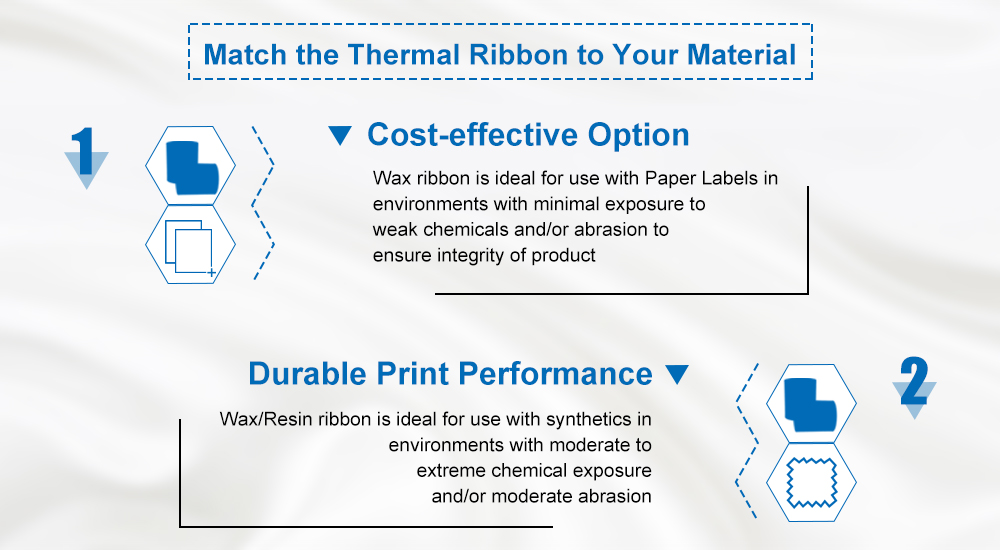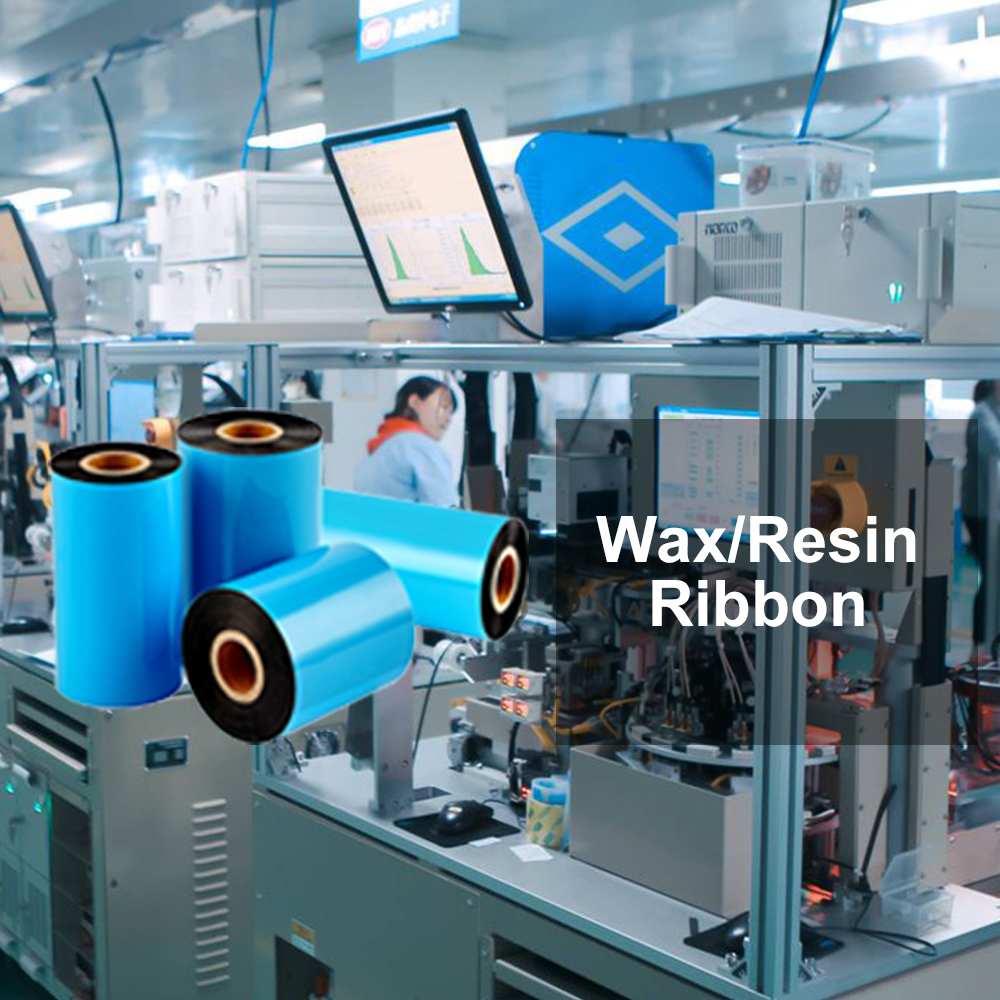How to Choose the Best Thermal Transfer Ribbon for Your Printing Needs?
Introduction
In the world of thermal transfer ribbons, you should match the appropriate tools with your printing tasks. After all, you would not use a paintbrush to write a letter. Select the proper ribbon so that your label or sign turns out clear and sturdy enough for applications that are going to be exposed over time. Whether you're tagging products for your shop, organizing shelves in a storeroom, or maybe making signs that brave the elements outdoors, this article will help you cut through the jargon and choose the thermal transfer ribbon that fits just right for what you need to be printed.
Thermal Transfer Ribbons
One of the popular methods of label and sign creation uses thermal transfer printing. The magic, however, occurs in the thermal transfer ribbon. You can almost think about it as the ink for your printer to make stickers and labels. There are different types of these special ribbons for various jobs done, from price tags to outdoor equipment labels. Investing in a good thermal transfer ribbon means you will not need to reprint the labels because they have faded too quickly or never stuck well in the first place. High-quality ribbons ensure that each print comes out clear from the very start, yet remain so, no matter whether on a frozen food package or even some outdoor piece of machinery.
Factors to Consider When Choosing a Thermal Transfer Ribbon
Picking out a thermal transfer ribbon isn't just about price or quality-it's about finding the right fit for your specific needs.
1. Match the Ribbon to Your Material
- Paper Labels: If you're printing on paper labels, wax ribbons are usually your best bet. They're cost-effective and provide good print quality for general use.
- Synthetic Materials: For tougher jobs like tags that might spend time in the sun or get wet, you'll want to look at resin or wax-resin ribbons. These stick around through all kinds of conditions, from the hot sun to a cycle in the dishwasher.

2. Make Sure It Fits Your Printer
Every printer has its own needs, like the right size and type of ribbon.
- Ribbon Width and Length: Check your printer's manual to find out what size ribbon it takes. Getting this wrong means the ribbon won't fit or function properly.
- Core Size: This is the size of the hole in the center of the ribbon roll. It must match your printer's specifications.
- Compatibility: Not all ribbons work with all printers. Ensure the ribbon you choose is compatible with your brand and model to avoid headaches down the line.
Selecting the right thermal transfer ribbon involves looking at what you're printing on, how durable it needs to be, and what kind of printer you have. It may seem like a bit to think about, but getting these details right means you'll end up with labels that are clear, last as long as you need them to, and won't give you trouble in the printing process.
Matching Ribbon to Application
Which ribbon type is best suited for different scenarios and uses? It's all about the right tool for the job.
1. Ribbon Types for Different Settings
In retail shops, printing labels for things like prices and stock is a big deal. You need something that's quick, easy, and cost-effective. That's where wax ribbons come in handy. They're perfect for the job because they stick well to all the usual label materials, and you can print loads of them without breaking the bank. If those labels are going to be outside-like on plant pots or outdoor gear-you'll want to use resin ribbons. These tough guys are made to last against sunbeams, raindrops, and hot or cold weather, so your labels stay readable come rain or shine. And then there's the middle-of-the-road option: wax-resin ribbons. If you're keeping track of items that get moved around a lot or stored in places that could be warm one day and cold the next, these ribbons are just the ticket. They give you a bit more durability than just wax, meaning the labels can handle some rough and tumble, but you won't have to pay as much as you would for the toughest resin ones.
2. Consider Your Industry Needs
Different industries have unique demands when it comes to labels and tags. In the healthcare industry, labels are crucial and must meet strict standards. They have to survive frequent cleaning and lots of handling without smudging or fading. That's why resin ribbons are the go-to choice in hospitals and clinics. They're really tough and can handle everything from the sterilization process to daily wear and tear, making them perfect for patient ID bracelets and labels on medical samples. Over in the world of manufacturing, tags are put through their paces with exposure to things like heat, chemicals, and constant rubbing or scraping. Resin ribbons rise to this challenge with ease. They ensure that all the important product information stays put from the assembly line all the way to when a product ends up in the customer's hands.
Practical Tips for Selecting the Right Ribbon
Intelligent selection of thermal transfer ribbons is going to save you time and money.
1. Test Before You Invest
Do not order a quantity without testing first. Ask your suppliers to send sample ribbons and run them on your printer with the actual material you are going to use in your production. This would help you go through firsthand how the ribbon performs on adhesion, print quality, durability, etc.
2. Evaluate Print Quality
When you test the samples, check for clear, smudge-free printing that doesn't fade or scratch easily. If the print survives handling, light exposure, and any other stress tests relevant to its final use, you're on the right track.
3. Consider Long-Term Costs
A cheaper ribbon might seem like a good deal initially, but if it leads to frequent reprinting or wears down your printer faster, it could cost you more in the long run. Balance the initial cost against the operational expenses to find the most cost-effective option.
4. Vendor Support and Availability
Look for a vendor who can help you through problems and is selling an item they really know about. They should offer geeky knowledge about ribbon compatibility and applications. Be sure to consider the supply chain-the reliability of the flow of the products.
Final Thoughts: Sealing the Deal on Thermal Transfer Ribbons
In conclusion, selecting the perfect thermal transfer ribbon is a crucial step in achieving high-quality, long-lasting prints for all your labeling needs. Whether navigating the retail shelves or withstanding the rigors of industrial environments, the key lies in matching the ribbon to both the material being printed on and the specific printer model. Run proper tests on the quality of prints, consider long-term financial implications, and find a trusted vendor in order to be able to invest your time confidently. After all, remember that the right ribbon does not just create the effect of effectively interpreted information but tells a lot about the quality that lasts with your product or service.



